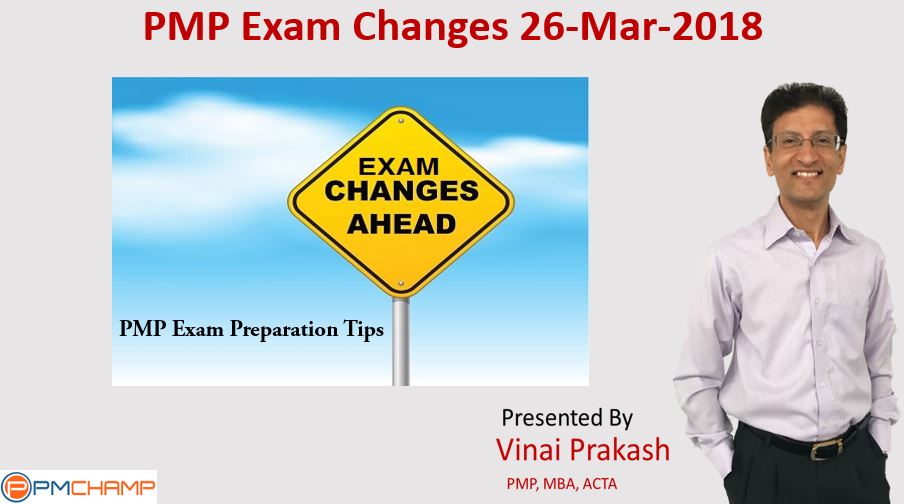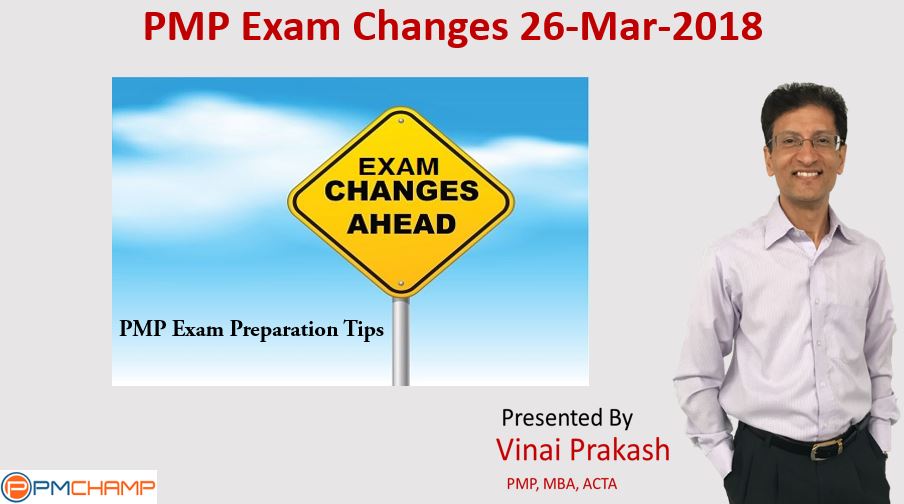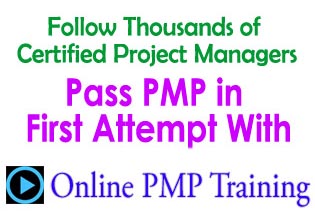 The PMP Exam has changed… yet again. It changes every 4-5 years, as the practice of Project Management matures and evolves along with the changing times.
The PMP Exam has changed… yet again. It changes every 4-5 years, as the practice of Project Management matures and evolves along with the changing times.
The next official release of the PMBOK GUIDE is the SIXTH EDITION. It was released in September 2017.
As a result of the changes in the PMBOK Guide, Sixth edition, the PMP Exam has changed, to stay consistent with the Guide.
The PMP Exam changed on 26 Mar 2018.
Therefore, it is important to study on the Knowledge Areas and Processes as outlined in the Sixth edition of the PMBOK guide.
Although the PMP Exam is not a test of the PMBOK Guide, it is used as one of the primary and main references for the exam. Several changes to the terminology – names, tools, techniques, knowledge areas, processes have changed, and you need to take note of these, as you may be impacted.
What are the changes in the PMBOK Guide, Sixth Edition
There are several significant changes in this edition, and these changes are provably the biggest change in the history of the PMBOK Guide.
- There’s a brand new chapter on the Role of the project manager. This has been added so that it throws focus on leading projects effectively, with the required competencies, experience and skills.
- Changes to the Knowledge Areas: Two knowledge areas have been renamed to be more accurate and consistent with the things that can be managed, and the things that can’t be managed.
- Time Management Knowledge Area is now called Schedule Management.
- Human Resource Management is now called Resource Management.
- Knowledge Areas now have more details. Each KA will now have 4 new sections added.
- Key Concepts
- Trends and Emerging Practices
- Tailoring Considerations
- Considerations for Agile / Adaptive Environments
- This edition is significant as it will, for the first time, include content on Agile and other Adaptive practices within Project Management.
- Number & Names of Processes have also changed. In the Sixth Edition, there are 5 significant changes related to Process names.
- Perform Quality Assurance has been renamed to Manage Quality
- Plan Human Resource Management has been renamed to Plan Resource Management
- Control Communications has been renamed to Monitor Communications
- Plan Stakeholder Management has been renamed to Plan Stakeholder Engagement.
- Control Stakeholder Engagement has been renamed to Monitor Stakeholder Engagement.
- Control Risks has been renamed to Monitor Risks.
- Manage Project knowledge has been added to the Executing Process Group, in the Integration Management KA.
- Implement Risk Responses Has been added to the Executing Process Group, in the Risk Management KA.
- Control Resources has been added the Monitoring & Controlling Process Group, in the Resource Management KA.
- Close Procurement process has been removed, and has been merged with the Close Project or Phase process.
- Estimate Activity Resources has been moved to Project Resource Management
- With all these changes, the number of processes in the Sixth edition has now increased from 47 processes to 49 processes.
Changes to the Structure of the PMBOK Guide, Sixth Edition
There are significant changes to the structure of the new PMBOK guide. It now has 3 big sections.
- Part 1 is the main Body of Knowledge Guide
- Part 2 is the Standards for Project Management
- Part 3 is the Appendices, Glossary and Index
The Role of a Project Manager has been created as a new chapter in this guide. Previously, it was discussed as part of chapter 1 in the old, Fifth Edition.
Changes to Inputs, Tools & Techniques, Outputs (ITTO)
There has been a better re-organization of ITTOs in this edition, with commonly used tools and techniques being grouped together because of their usage and intent.
Number of ITTOs has increased significantly, contrary to PMIs claims that they have been reduced.
How Are You Impacted With Changes To PMP Exam
As with every change to the PMP Exam, there is an initial period where there is a lot of confusion, a lack of clarity and a lot of rumors on the internet. It usually takes at least 3-6 months before the exam stabilize and become consistent, if I look at the past few releases of the PMBOK Guide and subsequent changes to the PMP Exam.
Make sure to begin to study based on the new PMBOK Guide alone. It is readily available at Amazon and leading bookstores world wide.
A Good Study Plan
Passing the PMP Exam is not about reading the PMBOK Guide or memorizing the ITTOs. It takes a good study plan, a determined approach, and consistent study on a daily basis for at least 2-3 months.
It is more about understanding the Project Management concepts and applying them on scenario questions.
Studying for the PMP Exam goes a long way towards enriching you and your career, beyond the exam days. It will give you a solid grounding in Project Management Practices, and will open up your mind to the possibilities, the opportunities, and a better life.
Do a self SWOT Analysis, and plan your career. Then work the plan.
Passing the PMP Exam with the PMBOK Guide Sixth Edition in indeed possible, and you can do it. Simply
If you are interested to attain PMP soon, join me as I show you the tips, tricks and techniques to prepare and pass the PMP exam in your first attempt.


